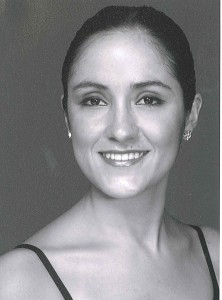Today’s “10 Questions With…” is actually 9, but Rhodie Jorgenson makes for an interesting read…
She is another person who 4dancers is featuring from the 2010 International Ballet Competition. Enjoy!
1. What is your dance background?
I trained in New York City at the School of American Ballet and American Ballet Theatre. I also performed with the ABT.
2. How did you wind up getting involved with the USA IBC Dance School?
In 1998, I was a coach for Rasta Thomas and Adrienne Canterna. In 2002, I was invited to be on the faculty. That year, I also coached Ashley Canterna and Danny Tidwell. In 2006 and 2010, I am again on the faculty.

3. What is the experience like for you?
It is wonderful! I am so happy to be here and grateful to be part of this extraordinary event.
4. What do you think the experience is like for the students?
It has to be wonderful and exciting. So many classes are taught by enthusiastic teachers who love dance and want to share. And then, they get to watch all of the beautiful competitors! What an inspiration!
5. What is unique about this schooling?
Watching the USA IBC of course! It is the most outstanding ballet competition in the country.
6. Who attends this program?
The students are age 12-23. There are 260 students from many parts of the country. The students are placed in 7 different levels.
7. What are some of the instructors like?
The faculty is all men and women who want to share their knowledge and love for dance. I find the teachers very positive and still very eager to learn.
8. What would you say the value is of this program in particular?
The value is being surrounded by dance excellence in a supportive, nurturing environment.
9. What is next for you?
I teach full time at Maryland Youth Ballet. This summer, I am also guest teaching in Long Island, New York and in Delaware. And—I’ll go to the ocean!!!
Bio: Rhodie Jorgerson received her training at the School of American Ballet and the American Ballet Theatre School. She danced professionally with ABT, as well as the Metropolitan Opera Ballet, and in summer stock musicals on stage, TV and film. She is currently on the faculty of the prestigious Maryland Youth Ballet. She is D.C. Children’s Ballet Mistress for the Joffrey Ballet, where she has set children’s roles for their Nutcracker since 1992. This year, she is also assuming the same role for the Pennsylvania Ballet’s presentation of George Balanchine’s The Nutcracker, at Kennedy Center. In June 2010, she will return for the third time to be dance school faculty for the USA IBC in Jackson, Mississippi. She has coached gold and silver medal winners at the International Ballet Competitions in Jackson, Mississippi and Varna, Bulgaria.









